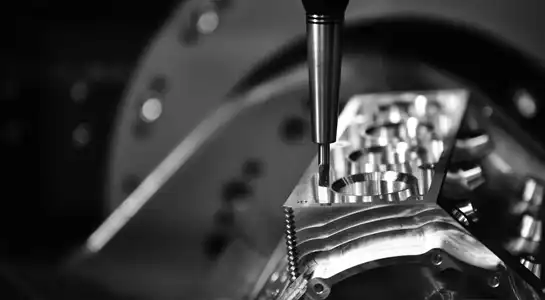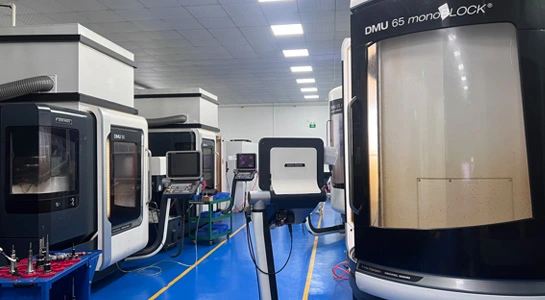What Are the Best Practices for CNC Machining?
CNC machining best practices encompass a range of techniques and strategies to optimize precision, efficiency, and quality in manufacturing. These include proper tool selection, maintaining optimal cutting speeds and feeds, ensuring rigorous machine maintenance, and implementing robust quality control measures. By adhering to these practices, manufacturers can achieve tighter tolerances, reduce waste, and produce high-quality parts consistently. Additionally, leveraging advanced CAD/CAM software, employing skilled operators, and staying updated with the latest technologies are crucial for maximizing the potential of CNC machining processes.
Optimizing CNC Machining Processes
Tool Selection and Management
Choosing the right tools for CNC machining is crucial for achieving optimal results. High-quality carbide tools often provide superior performance and longevity compared to their counterparts. It's essential to consider factors such as material hardness, cutting depth, and desired surface finish when selecting tools. Implementing a tool management system helps track tool life, reduces downtime, and ensures consistent quality across production runs.
Cutting Parameters Optimization
Fine-tuning cutting speeds and feeds in CNC machining is vital for balancing productivity and part quality. Factors like material properties, tool geometry, and machine capabilities influence these parameters. Advanced CAM software can help determine optimal cutting conditions, reducing trial and error. Regularly reviewing and adjusting these parameters based on real-world performance can lead to significant improvements in efficiency and part quality.

Workholding Strategies
Proper workholding is critical for achieving tight tolerances and preventing part movement during machining. Custom fixtures, vacuum tables, and hydraulic clamps are some effective solutions. For complex parts, consider multi-axis machining to reduce setups and improve accuracy. Always ensure that workholding methods don't interfere with tool paths or compromise part integrity.
Enhancing Precision and Quality Control
Machine Calibration and Maintenance
Regular calibration of CNC machines is essential for maintaining accuracy over time. This includes checking and adjusting axis alignments, backlash compensation, and thermal drift. Implementing a preventive maintenance schedule helps identify potential issues before they affect production. Keeping machines clean, lubricated, and in optimal condition not only improves part quality but also extends equipment lifespan.
In-Process Inspection Techniques
Incorporating in-process inspection methods in CNC machining can significantly enhance quality control. Techniques such as on-machine probing allow for real-time measurements and adjustments. This approach can detect and correct errors early in the production process, reducing scrap rates and improving overall efficiency. Advanced metrology equipment, like coordinate measuring machines (CMMs), can provide detailed post-machining inspections for critical parts.

Data-Driven Quality Improvement
Leveraging data analytics in CNC machining can lead to continuous improvement in quality and efficiency. By collecting and analyzing production data, manufacturers can identify trends, predict maintenance needs, and optimize processes. Implementing statistical process control (SPC) techniques helps maintain consistent quality across production runs and facilitates quick identification of out-of-spec conditions.
Advanced Techniques for Complex Parts
Multi-Axis Machining Strategies
For manufacturing complex parts with intricate geometries, multi-axis machining strategies such as 5-axis machining provide unmatched precision and efficiency. These techniques allow multiple machining operations to be completed in a single setup, eliminating errors caused by repeated repositioning. They also make it possible to produce detailed contours, undercuts, and superior surface finishes that traditional 3-axis methods cannot achieve. To fully leverage multi-axis machining, engineers must focus on optimized toolpath programming, collision avoidance, and appropriate cutting tool selection to ensure both accuracy and productivity.
High-Speed Machining (HSM)
High-speed CNC machining (HSM) is a powerful approach for enhancing both productivity and part quality in demanding applications. By using increased spindle speeds and higher feed rates while applying lighter depth cuts, manufacturers can minimize cutting forces and reduce cycle times. This process improves surface finishes, enhances dimensional accuracy, and extends tool life when properly implemented. Successful adoption of HSM depends on robust machine tool design, precise spindle control, optimized toolpath generation, and a deep understanding of material behavior during high-speed cutting conditions.

Adaptive Machining Techniques
Adaptive machining techniques introduce flexibility by enabling real-time adjustments to toolpaths based on in-process monitoring and sensor feedback. This method is particularly valuable for compensating for raw material variations, thermal distortions, or gradual tool wear that can compromise dimensional accuracy. Advanced CAM software integrated with adaptive controls allows optimized material removal while maintaining part consistency. Implementing adaptive machining improves overall efficiency, reduces scrap, and ensures higher reliability when producing critical, high-value components used in industries such as aerospace, automotive, or precision medical device manufacturing.
Conclusion
Implementing best practices in CNC machining is crucial for achieving high-quality, efficient production. By focusing on tool management, process optimization, and quality control, manufacturers can significantly enhance their machining capabilities. Embracing advanced techniques like multi-axis machining and adaptive strategies can further improve productivity and part complexity. As technology continues to evolve, staying informed and adapting to new methods will be key to maintaining a competitive edge in the CNC machining industry.
FAQs
What materials can be used in CNC machining?
CNC machining can work with a wide range of materials, including various metals like aluminum, steel, and brass, as well as plastics such as ABS, POM, and PEEK. The choice of material depends on the specific requirements of the part being produced.
How does CNC machining compare to 3D printing?
While both are manufacturing methods, CNC machining typically offers higher precision and better material properties for functional parts. 3D printing, however, can be more cost-effective for complex geometries in low volumes.
What are the main advantages of CNC machining?
CNC machining offers high accuracy, repeatability, and the ability to work with a wide range of materials. It's ideal for both prototyping and production runs, providing quick turnaround times and the capability to produce small and micro parts.
Experience Precision CNC Machining Services | BOEN
At BOEN Prototype, we're your trusted CNC machining supplier and manufacturer. Our state-of-the-art factory specializes in high-precision prototypes and low-volume production using both plastic and metal materials. With our expertise in CNC machining, rapid tooling, and advanced surface finishing techniques, we deliver top-quality parts that meet your exact specifications. Experience the BOEN difference in CNC machining services. Contact us at contact@boenrapid.com to discuss your project needs today.
References
Smith, J. (2022). Advanced CNC Machining Techniques for Precision Manufacturing. Journal of Manufacturing Technology, 45(3), 287-301.
Johnson, A. & Lee, S. (2021). Optimizing Tool Selection in CNC Machining: A Comprehensive Guide. International Journal of Production Research, 59(8), 2456-2470.
Brown, R. (2023). Quality Control Strategies in Modern CNC Manufacturing. Quality Engineering, 35(2), 178-192.
Davis, M. et al. (2022). The Impact of Multi-Axis Machining on Complex Part Production. Journal of Materials Processing Technology, 300, 117345.
Wilson, K. (2021). Adaptive Machining: The Future of CNC Manufacturing. Robotics and Computer-Integrated Manufacturing, 68, 102086.
Thompson, L. & Garcia, R. (2023). Sustainable Practices in CNC Machining: Balancing Efficiency and Environmental Impact. Journal of Cleaner Production, 350, 131503.

How Can We Help?

Your Trusted Partner in Rapid Manufacturing.



